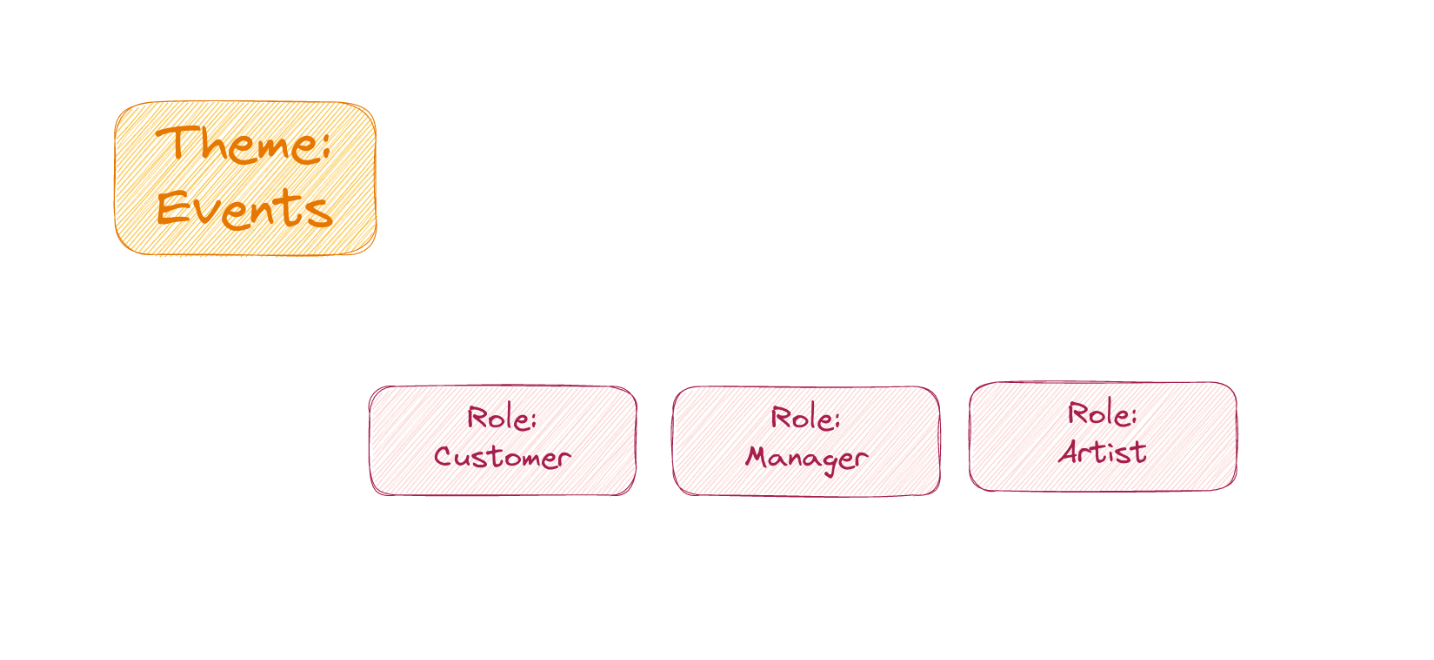What you’ll need
- If you’re on a physical space:
- Whiteboard
- Post-it notes
- Sharpies
- Colored tape (optional)
- If you’re going digital:
- Any whiteboarding app:
- Miro
- Klaxoon
- Mural
- Excalidraw
- Any whiteboarding app:
Summary
- Identify the general need that customers want satisfied. Stick to the problem space, not the solution space.
- Identify who takes part in it.
- Roughly break down the story behind that need into large sequential chunks.
- For each large chunk, refine it into tinier steps.
- Repeat the refinement process until you fully understand the problem to be solved.
- Prioritize the different parts of the problem. You can use Now/Next/Later, MoSCoW or any other prioritization tool.
Benefits
- Gain full perspective of the problem space.
- Share a deep understanding of the problem space.
- Prioritize more effectively.
- Accelerate solution development.
How it works
Building digital products is quite the challenge. Especially when you don’t understand what you’re trying to do and why. Leverage user story mapping to regain that understanding at a deeper level.
User story maps are visualizations of problems users have. Contrasted to typical linear backlogs, their structure provides two very significant outcomes: significant clarity and deeper collaboration.
Let’s go through an example that shows the power of a user story map.
Start with a wide problem
Problems are the fuel that power our solutions as product teams, and they are the source of perceived value to what those teams build.
Start with the main theme of the problem. It can usually fit within a very small phrase, sometimes even a word.

Identify the actors
Once you’ve identified the problem statement, think of who plays a role in that story. This is particularly beneficial to help the team produce a meaningful experience for the users of the product, as well as sustain marketing and sales strategies while the product is built by the technical team.

Create the backbone of the problem
Your actors are there, and they usually do something within the story. Break it down into big chunks, and put the actors on top of them. If an actor does multiple things within the sequence, create extra boxes for the role and put them in the right spot.

Break down until small enough
Here’s where most of of the time for this exercise is invested. You have the big perspective of the story. You know who plays a role in that story. The next step is to break down that large chunk narrative into smaller bits.
The lower you go, the more you break down, and the more detailed it gets. Go as low as you believe is necessary to ensure a deep shared understanding of the problem among everyone in the team.
In the end, you’ll see a big tree-like structure, the root being the theme you came up with in the beginning, the trunk being the horizontal backbone of chunks, and the leaves being each different detail node.

Prioritize
Not every branch in the tree is urgent, and it might prevent an earlier version of your product being released to the public and generating value. To accelerate those releases, you break them down into smaller packages.
The product manager is responsible for collaborating with all stakeholders to ensure everyone is aware of the vision of that product, while ensuring each release proposition generates early and consistent value to customers.
Use the priority method of your choice. The example uses Now/Next/Later, and you’re welcome to use something else, as long as you split the value proposition in smaller packages that generate value on their own.
